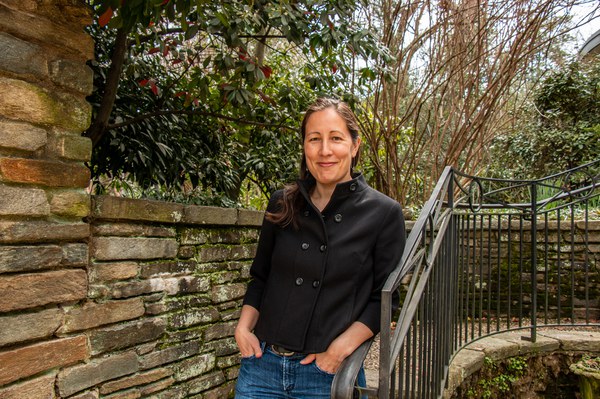Christina Halperin, professor at Université de Montréal, was a fellow in Pre-Columbian Studies in spring 2022. Her research report, “Foreigners Among Us: Alterity and the Making of Pre-Columbian Maya Societies,” explored captives, and particularly female captives, in ancient Maya society as one among many manifestations of how ancient peoples engaged with foreigners.
Q&A with Christina Halperin
What do we know about captives in ancient Mesoamerica?
Elite male captives are often featured—sometimes even named—on stone monuments. These captives often happened to be of an enemy polity to the group of people who authored the monuments. Although these elite male captives were memorialized in stone, I’m interested in who else may have been subjected to captivity and how they may have been incorporated into their captor societies, treated as foreigners, and maybe eventually adopted into these societies.
Part of this work is looking at female captives, who are underrepresented in the monumental evidence. There are limited images of them in figurines or other smaller media, so we’ve struggled to understand female and other lower-status captives. I look at ethnohistoric written records from the sixteenth century and consult colonial dictionaries like Antonido de Ciudad Real’s 1577 Diccionario de Motul Maya and Alfredo Barrero Vásquez’s 1980 Dicionario Maya Cordemex to better understand who these captives might have been and what agency they might have had.
I have found that there are specific words for captives and specific words for slaves. Many (though not all) Maya languages used the same words for captives and slaves, and the overlap between the languages suggests ideas of slavery were well-anchored in Pre-Columbian Maya society. There was a substantial vocabulary for slaves—in certain Yucatecan dictionaries, the Spanish translations of Maya words were often based on a feminine definition of captive or slave, suggesting they were interpreted as female slaves.
Lower-status individuals taken as captives were sometimes turned into slaves, although we don’t exactly know how institutionalized the practice was. At least in the period of colonial contact, slavery did not always seem to be a permanent status, and these individuals may have had some mobility in their captor societies.
What were the roles or significance of captives?
The most famous and well-documented captive is Malintzin, the mistress of Hernan Cortes. Many Spanish authors wrote about her, but Cortes barely mentions her, even though she fathered his son Martín Cortes. Other members of his expedition were quite enamored by her and respected her, as did the Indigenous forces. She grew up in a royal home in Veracruz and was sold or given away and served as a slave for a lord in the Maya area at age twelve. There, she was given away as a slave with nineteen other girls or young women to Cortes, who eventually realized she was gifted with languages. She translated essentially all of Cortes’s interactions, and the Indigenous people looked up to her with great esteem, such that eventually she had a certain amount of mobility and privilege in her captivity.
Obviously not all captives had that fate, but other documents talk about how slaves were often intermediaries between Indigenous communities and the Spanish and some of the Spanish-Indigenous alliance forces. These captives are articulation points between different cultures, so, in a sense they were quite worldly even though they had very little agency.
Why is it important to study captives and other “foreigners” in ancient Mesoamerica?
My larger project is about foreigners and the making of outsiders—ideas of alterity in general. I take an intersectional approach to the foreign or outsider status as it intersects with gender and class in different regions of the Maya area.
Often the major discourses around foreigners in ancient Mesoamerica have been about warriors or stranger-kings that come from afar. I want to incorporate some of that discourse but also push the boundaries to look at other types of foreigners and strangers within Maya society itself. In other chapters in this book project, I consider wives who arrived from elsewhere, how local cuisines both defined and dissolved outsiders, and examine notions of how different ethnic groups or people with different practices lived alongside one another.
We tend to think of the Maya area as a homogeneous cultural zone, but in fact at no point was this area united political or culturally. There were over thirty different linguistic groups at the point of contact and continually shifting political affiliations. In some sense, the practices and traditions may have been very similar and not seen as foreign, but I’m trying to underscore that the idea of outsider or foreigner was created through practices and did not exist intrinsically or physically. The idea is to go beyond the typical elite, warrior-type agents of history—there were other ways that the foreign was experienced and other ways being an outsider was created and confronted in Maya history.
May Wang is postgraduate writing and reporting fellow. Photo by Emily Orr, 2021-2022 humanities fellow.

